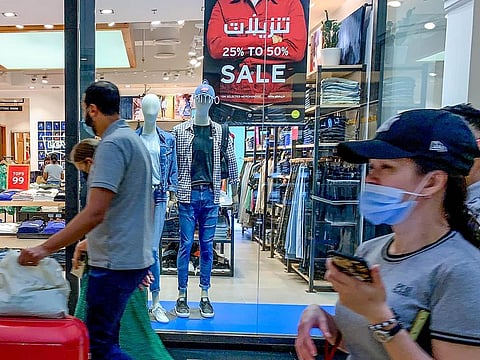It is time UAE's community malls did more with brick-and-digital
Their full emergence after pandemic-enforced changes depends on a new mix

The UAE’s success in managing the pandemic echoes through the region and beyond. The decision made by Dubai to re-open its malls, offices and government services mid-pandemic proved to be a winning formula for the emirate and its business community, especially the retail space.
After the initial impact, the retail industry has never looked back. From the launch of summer promotions in June 2020, Dubai’s retail industry returned to 80 per cent pre-Covid levels of sales.
Understanding the scale of impact on physical retail after the pandemic requires a deep dive into the nature of the audience and their responsiveness towards the mega and community malls. Several stats point to a drop in footfall across community malls in addition to what was brought on by changes to shopping trends.
This flux rings in a sense of uncertainty among the retail community. While research shows that chain retailers in malls witnessed an 80 per cent business recovery, the cut made by the pandemic still runs deep for community malls. Traditionally, the mix offered in community malls is more often than not boutique-style groceries, F&B, fitness or entertainment.
Need long-standing solutions
For many operators, survival has more or less always been a challenge but on the heels of Covid, shutting shop or asking for temporary relief was the only way to get through the storm. Unlike larger chains, which were able to build a robust online presence in a short span and digitize operations, smaller retailers didn’t possess the same agility and were unable to do so.
For example, larges malls introduced innovative concepts such as grab & go for food, click-and-collect and curb-side pick-up to meet the needs of the customers. These features are all the buzz these days and will continue to attract customers in the long run. But what can community malls do to join in?
It is no secret that rentals take a big bite into revenues. However, a quick fix for community mall operators and their retailers can be adopting revenue sharing models to ensure that pressure caused by rents is reduced to a great extent.
Share the space
Another key consideration for community mall settings should be establishing a central database. A shared portal can facilitate larger collaborations between operators and retailers while guaranteeing the customer is exposed to improved experiences based on their likes and preferences. Besides that, leveraging festivities, entertainment and promotions is key for long-term sustainability and increased footfalls.
In this context, community malls must collectively come together to back promotions and host more events and festivitiess. Given the influence of social media and online channels, they must also simultaneously transition into the digital dimension. Undoubtedly, the most effective neighbourhood destinations will factor in the use of e-commerce, and the changing uses of social media and mobile technology into their operating models to provide a layered and seamless experience.
‘Conversational commerce’ using WhatsApp and chatbots can allow customers to select products on social media and then collect them/get them delivered will pave the way for a new age community mall. It is very clear among the retail community that reinvention is the name of the game.
While recovery for community malls has been slow, there is huge potential to stitch physical and digital experiences together.
Sign up for the Daily Briefing
Get the latest news and updates straight to your inbox




